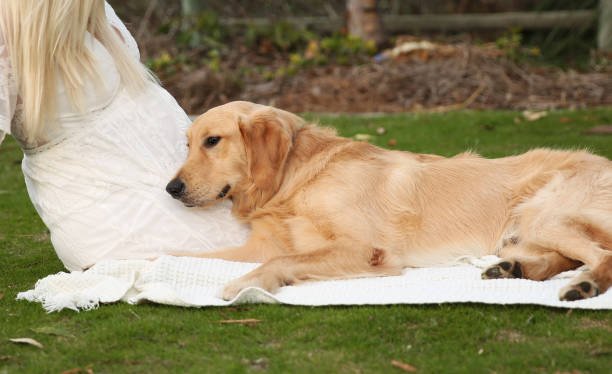When Can Dogs Go to the Park?
A visit to the dog park is similar to a trip to Disneyland for dogs; nevertheless, despite the fact that playing at the dog park may be a joyful and enriching new experience, it is not a safe location for small pups.
Before taking your new puppy to the dog park, they should be at least six to eight months old at the very least.
Before they can interact with canines they haven’t met before, they need to have all of their vaccinations, be well socialized, and know basic instructions.
In order to make sure that everyone has a positive time at the dog park, it is important that you make sure your pet is prepared to go there by following these instructions.
When Will Puppies Be Allowed to Visit the Dog Park?
When they are at least six to eight months old, depending on their breed and other circumstances, you may start taking your puppy to the dog park with you. This proposed age range was determined based on a number of factors, the primary one being vaccination status.
Deadly diseases such as parvovirus and distemper may live in the soil for a whole year, so even if a sick dog went around the park once over the last six months, your puppy might get infected with one of these viruses.
A series of three or more combination vaccines (DHPP) should be administered to pups every two to four weeks until they reach the age of at least 16 weeks, as recommended by the American Animal Hospital Association (AAHA), which provides guidelines about vaccinations.
Why, therefore, is it not safe to take them to the dog park after they have had their last vaccination at the age of four months? It takes around two weeks post-vaccination to acquire protection, so you’ll need to wait at least that long before exposing your dog to public locations such as parks and playgrounds.
Puppies are at their most impressionable between the ages of six and eight months, so it’s best to hold off until then. Your young dog could be frightened by a pack of rowdy canines in the park, and this might be a traumatic event for them that they carry with them into adulthood.
It is also likely that they will not have had sufficient training under their belts to comprehend your instructions to “Come,” and their disobedience might lead them into some difficulty.
Instead, before taking your new puppy to the dog park for the first time, make sure they have had enough time to gain self-assurance via structured socialization and training.
The majority of pups are either spayed or neutered somewhere between the ages of six and eight months.
It is vital to get your dog’s ears cropped or check to make sure they are not in heat before taking them to a dog park since the last thing you want to come out of the experience is an unanticipated pregnancy.
Concerns Relating to the Breed
At eight months of age, most dogs should be ready to go to the dog park, but giant breed pups should wait a little bit longer than that. This is due to the fact that huge and gigantic breed dogs, such as Great Danes, Irish Wolfhounds, German Shepherd Dogs, and Labrador Retrievers, continue to mature physically until between the ages of 12 and 18 months of age.
An activity of a high intensity or for a prolonged amount of time during this growth stage might cause to developmental defects such as the elbow or hip dysplasia.
The management of one’s weight and maintaining proper nourishment are also important parts of this puzzle. Find out when it is okay for your big-breed puppy to run about in the dog park by consulting with your veterinarian.
Prerequisites for Using the Dog Park
The puppy playground isn’t appropriate for every single canine. You should check that they are the proper age, but you should also make sure that they have the right personality and that they have had the appropriate training. Make sure your dog satisfies all of the following requirements before taking him or her to the park:
- a minimum of six months old, or older depending on the breed.
- Absolutely protected by vaccinations (final vaccine was at least two weeks prior)
- Strong recollection requires (will respond to their name, “Come,” and “Stay,” even with distractions)
- Has has experience interacting with a number of different dog breeds (all ages, sizes, etc.)
- Is well-behaved with other dogs, adults, and children alike.
- Not cowardly, impulsive, nor belligerent
- Not unwell or harmed
- Those that have been spayed or neutered, or those who are intact but not in heat
- How to Acclimate Your New Dog to an Off-Leash Dog Park with Your Pup
- On a beautiful spring morning, a dog gets ready to go for a stroll while holding the leash in its jaws.
Do you believe your dog has what it takes to have a good time at the dog park and make other dogs happy? Your puppy should be introduced to the dog park in a measured and cautious manner for their own protection.
Aim to visit the park at “quieter” hours, such as in the morning on weekdays, when there are likely to be less people and dogs present. For the first few experiences, it is best to keep your new puppy on a leash.
This will offer you greater control over the situation and allow you to keep an eye on your small one at the same time. Staying for about 20 to 30 minutes at most will prevent you from overwhelming them.
You will eventually be able to let your dog run free and remain there for longer periods of time after he has been used to the surrounding area and is at peace with the prospect of other dogs approaching him to say “hello.”
But regardless of whether this is your first time there or your fifty-first, you need to be on the lookout at all times.
Always be sure to keep a tight check on your puppy to ensure that it won’t get into mischief, eat something it shouldn’t, or get into a fight with another dog.
If your dog seems stressed or begins behaving out at any time during the activity, you should take him home and try again another day.
First, Let Your Pup Explore These Secure Areas on Its Own
There is always hope even if your new canine companion is too timid or young to go to the dog park.
In point of fact, it is essential that they be socialized with healthy and vaccinated canines as well as a variety of humans throughout the first few months of their lives. Continue to take them to these secure areas until they are mature enough to visit the dog park.
- Homes belonging to friends that have immunized dogs
- yards belonging to neighbors whose canines have been immunized
- Instruction for puppies in obedience
- Carried via places like coffee cafes and pet stores, among other places.
- Walks on a leash in the local neighborhood (only when completely vaccinated)
- Make going to the dog park a positive experience for yourself and your pet.
It is essential to keep in mind that the dog park is not the appropriate environment to begin your puppy’s socialization. Before going to the dog park, they should already be familiar with interacting with humans and various breeds of dogs.
There is a considerable probability that you and your canine companion will have a great time at the dog park if your furry friend is of an appropriate age, has been fully vaccinated, and has an appropriate disposition.
The Symptoms Of A Dog’s Pregnancy
How To Tell If A Dog Has Been Mating
Recognizing The Female Dog’s Heat Cycle
The Initial 3 Signs Of Dog Pregnancy





